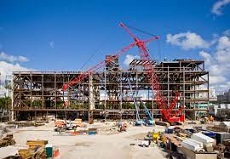
There has been a lot of emphasis put on sustainable construction in the last few years. Construction produces a lot of waste—most of which is damaging to the environment. Because of this, construction companies and their clients alike must do everything they can to remove all waste that is produced to not only comply with local laws and regulations, but also protect the environment. Sustainable construction calls for the removal and management of all construction waste. In this article, we are going to look at some strategies construction companies can use to ensure they are doing their part in managing waste produced during construction.
- Plan Ahead
Project managers at construction sites are responsible for putting together building plans before any work starts. During the planning phase, they can put measures in place to ensure as little material as possible is wasted. They can do this by ensuring all their staff is trained in the proper use of materials and waste management, as well as making sure all mistakes that would lead to waste are eliminated.
The plan should account for potential waste and ensure correct material calculations so that they only order what they need and not more. Managers should provide bins for the collection of different types of waste, identify materials that can be recycled so they do not end up in a landfill, and ensure all workers know how to sort and recycle different materials.
- Prioritize Reusing Different Materials
Depending on the type of construction project, there are a lot of materials that can be recycled. Doors and windows in working order, for example, do not have to be thrown away as they can be reused, or even resold, to be used in other projects. Metals, asphalt, and most wood can also be recycled and put to good use.
If these reusable materials do not find new use, or are not managed efficiently, they will be deposited somewhere where they can damage the environment. Additionally, construction companies have to think about the cost of disposal, which can be substantial depending on where the materials originated and where they are being disposed of.
- Ensure Timely Collection of Waste
Even when bins and other collection points, such as dumpsters, are provided, doing so ends up not being as effective as expected if they are not collected and emptied on time. When they are not collected, the trash and waste they contain will pile up and can end up spilling out of these collection points. To stop this, these bins and dumpsters must be collected and emptied on time so that they don’t too full and overflow.
Construction companies can contract businesses that provide dumpsters as well as prompt pickups. Businesses can source cost-effective dumpster service New York from reputable companies like Waste Connections. Waste Connections provides waste removal and recycling services in Queens, Brooklyn, Bronx, and Manhattan and has been doing so for more than 20 years. They serve a variety of companies and industries including hotels, retail, supermarkets, hospitals, schools, and construction sites.
- Reduce Packaging
While construction companies hold little influence over how companies and suppliers choose to package their products, they have total control over how many packages they receive. For example, purchasing in bulk, in larger volumes, and larger quantities means the construction company still gets the amount of material they need, but in less packaging.
Reusing non-returnable containers, such as barrels, buckets, and tubs, to hold materials is also a great way of reducing the amount of packaging the company receives.
Lastly, construction companies can donate any non-returnable and reusable container to various organizations. These organizations will find a way to reuse these containers, ensuring they do not end up in a landfill.
- Considering Deconstruction Before, and Instead of, Demolition
Once a building is demolished, everything inside it is considered waste and is thus no longer reusable. Deconstruction is a form of recycling that has become popular over the past few years. Deconstruction focuses on the recovery of all usable materials in a project and includes everything from assembly systems to foundations and structures.
The deconstruction process involves the careful inspection of a building or project to see what can be reused. The building is then disassembled, taking special care to not damage any of the materials being salvaged. The disassembled and salvaged materials can be reused in new constructions or even sold.
Do understand that complete deconstruction is not always possible, and buildings that have a lot of wood frames benefit the most from deconstruction. Paving that uses high-quality bricks can be cleaned and reused, as can those that use low-quality mortar.
The construction industry produces a lot of waste, and there has been a push to reduce the amount of waste that ends up in a landfill, and eventually the environment. By using the strategies discussed above, construction companies can reduce pollutants and the waste they produce.
Related posts:
Many Benefits of Recycling for Small Business Owners
How to Find the Best Supplier for Copper Electroplating
Shipping Container Homes: A Modern Guide to Building Your Dream Home
7 Tips to Handle Overflow of Orders in Your Business
How To Enjoy Stress-Free Home Buying Process When Running Full-Time Business






